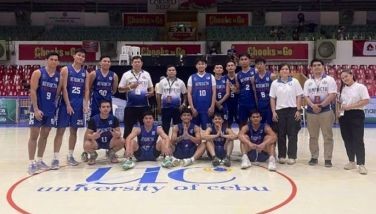Not binding

Is it necessary to employ handwriting experts in the examination of allegedly forged documents? This is one of the main issues decided in this case.
The case involved a parcel of land with an area of 48,144 square meters covered by Original Certificate of Title (OCT) No. 139 located in Pangasinan. The registered co-owners of said property were Andres who owned one-half of the eastern portion, and his grandson Dr. John who owned the one-half western portion. Dr. John was the grandson of Andres, the only child of his late son Bert with his first wife. With his second wife Dora, Andres also had three children, namely, Rica, Ted and Art.
Over a period of almost 12 years, the title to the said property underwent several transfers. Before Andres died on
Ted and Rica nevertheless allowed their mother Dora to use and enjoy the land. However, after their mother suffered a stroke in May 1986, Art took possession of the property and continued using and appropriating its fruits even after the death of their mother on
Art and Dr. John claimed that the signatures appearing in the Deed of Conveyance were not the signatures of Andres and Dora, whereas the signature appearing in the Deed of Quitclaim was not Dr. John’s signature. In fact Dr. John said that he was in
After trial, the lower court (RTC) found that the signature of Andres in the Deed of Conveyance was substantially different from his admittedly genuine and authentic signatures. It likewise ruled that the signature of Dr. John in the Deed of Quitclaim had marked differences from his signatures in other documents. Moreover, the trial court also found that Dr. John was in
Rica and Ted questioned this decision. They contended that both the RTC and the CA erred in ruling that Andres’ and Dr. John’s signatures were forgeries. They argued that courts should have employed handwriting experts and not merely made their own findings based solely on their own examination and comparison of signatures. Were Rica and Ted correct?
No. Handwriting experts are usually helpful in the examination of forged documents because of the technical procedure involved in analyzing them. But resort to these experts is not mandatory or indispensable to the examination and comparison of handwritings. A finding of forgery does not depend entirely on the testimonies of handwriting experts because the judge must also conduct an examination of the questioned signature in order to arrive at a reasonable conclusion as to its authenticity. The opinions of handwriting experts are not binding upon court, especially when the question involved is mere handwriting similarity or dissimilarity, which can be determined by a visual comparison of specimens of questioned signatures with those of the currently existing ones. The Rules of Court (Section 22, Rule 132) also explicitly authorizes the court, by itself, to make a comparison of the disputed writing with writings admitted or treated as genuine by the party against whom the evidence is offered, or proved to be genuine to the satisfaction of the judge (Pontaoe vs. Pontaoe, 165318, April 22, 2008).
Note: Books containing compilation of my articles on Labor Law and Criminal Law (Vols. I and II) are now available. Call tel. 7249445.
* * *
E-mail at: [email protected]
- Latest
- Trending





























